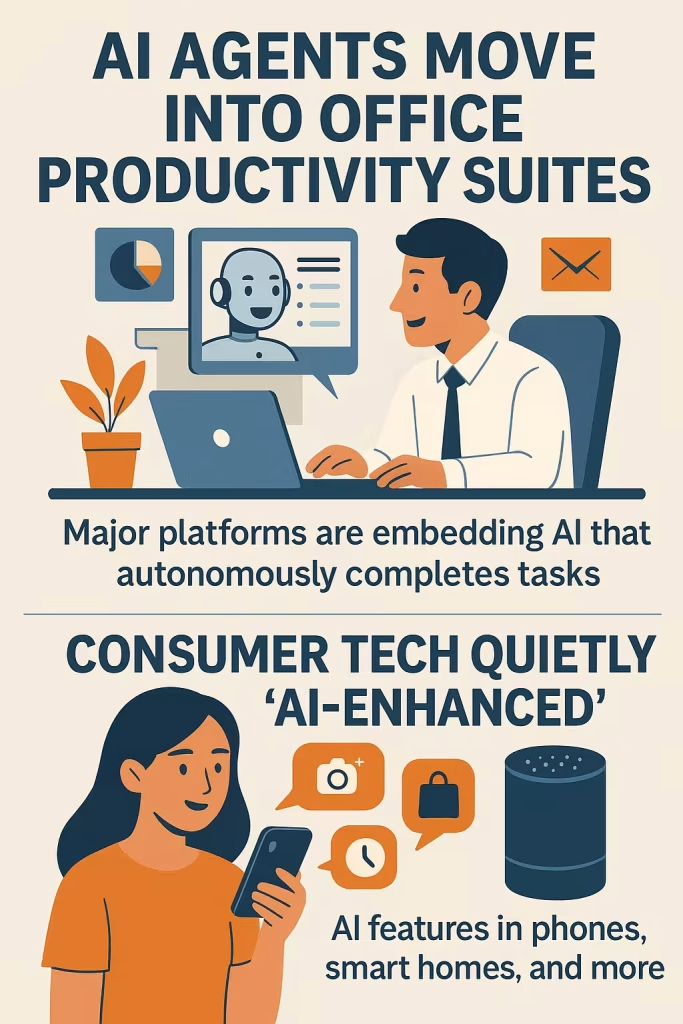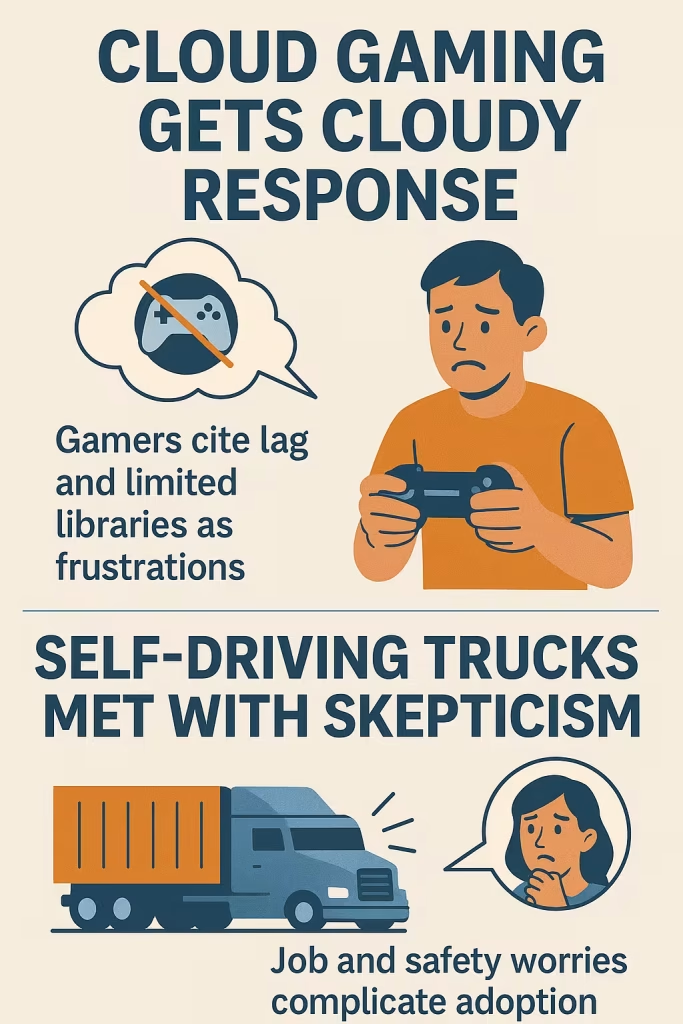AI Agents Move Into Office Productivity Suites
Major productivity platforms are accelerating the transition from simple chat interfaces to autonomous AI agents capable of completing complex tasks. Microsoft is piloting an agent inside Microsoft 365 that can understand natural language requests like “prepare a Q4 sales brief and schedule a review meeting.”
This new class of AI can gather data from files, summarize information, update spreadsheets, and adjust calendars with minimal supervision. Google and OpenAI are pushing similar developments in Workspace and ChatGPT integrations.
Why this matters
This marks a shift from “assistive chatbots” toward workflow-oriented digital coworkers. Adoption will depend on trust — especially around permissions, accuracy, and transparent logs of AI-initiated actions. Enterprises will begin creating new roles focused on AI operations governance to prevent automation errors and maintain clear oversight.

OpenAI Expands Tools for Businesses & Developers
Developers now have deeper access to API tools, enabling custom assistants for help-desk automation, document workflows, and code review.
Industry impact
The AI ecosystem is splitting into two tiers:
- Foundation model providers (OpenAI, Google, Anthropic)
- Vertical AI products built on top of those APIs
Organizations will face higher switching costs as they commit deeper to one provider’s tools, formats, and model-specific workflows.
GitHub’s AI Assistant Becomes a Core Developer Tool
GitHub is positioning its AI coding companion as a default part of modern software engineering. New capabilities include deeper codebase understanding, better adherence to project-specific style guides, and inline explanations that let developers ask why a particular suggestion was made.
AI tools are also integrating more tightly with CI/CD pipelines, providing automatic test drafts, bug fixes, and patch suggestions.
Why developers care
This represents a transition to AI-first coding workflows, where routine tasks are automated and developers focus more on design, architecture, and review. Teams will still need strong guardrails, as AI-generated code may introduce licensing or security issues if not monitored.
Google Research Pushes Efficient, Specialized Models
Google Research continues exploring ways to make large models faster and more targeted. Work on sparse transformers, Mixture-of-Experts (MoE), and retrieval-augmented generation enables powerful results with lower inference cost.
What’s changing
The narrative is shifting from “bigger is better” toward right-sizing AI models. Many enterprise applications will run on hybrid stacks where a general-purpose LLM orchestrates smaller, specialized models optimized for specific tasks like materials science or protein modeling.
Governments Increase Pressure on AI Safety

News from global policy coverage highlights rising regulation around deepfakes, election integrity, and AI-generated misinformation. Governments are exploring:
- mandatory watermarking
- transparency reports
- disclosure of training data sources
- licensing for high-risk general-purpose AI
Regulatory direction
We are entering a period where AI governance requires operational compliance, not just guidelines. Providers with built-in audit trails, risk controls, and model-evaluation pipelines will have a long-term advantage.
Enterprise AI Shifts from Pilots to Platform Strategy
Large companies are consolidating experimental tools into unified AI platforms, often anchored by cloud providers. High-value use cases include:
- contact-center automation
- document workflows (claims, onboarding, compliance)
- analytics copilots
- coding copilots
Strategic takeaway
The “AI tourism” era is ending. Enterprises now expect measurable ROI: reduced handling time, improved accuracy, and automation of repetitive processes. Winning implementations combine clear use cases, good data infrastructure, and workforce upskilling.
Consumer Tech Quietly Becomes More “AI-Enhanced”
Consumer-facing devices — from smartphones to email services — are embedding less flashy but more useful AI features. Examples include:
- on-device notification summarization
- automatic image enhancement
- call transcription
- email classification and suggested replies
- smart home routines that learn behavior patterns
Why this matters
The most impactful AI improvements often operate in the background, making technology feel more intuitive. Privacy concerns remain, but on-device processing is helping reduce dependence on the cloud for personalization
The Changing Economics of AI and Labor
Insights from MIT Technology Review and Stanford HAI suggest that AI most dramatically improves productivity for mid-skill workers. Rather than replacing entire job categories, AI is reshaping:
- workflow distribution
- team productivity
- demand for judgment-based roles
- coordination across departments
What workplaces should expect
The future is AI-augmented work, not AI replacement. Organizations that invest early in AI skills, workflow redesign, and employee training will outperform those that rely solely on automation.
McKinsey: Generative AI Moves Into Core Business Processes
McKinsey highlights marketing, R&D, customer operations, and software engineering as the highest-value targets for generative AI adoption. Leading companies are using AI to:
- speed up product design
- personalize campaigns
- automate document-heavy tasks
- enhance risk analysis
Executive insight
Generative AI is moving from side projects into budget-backed strategic initiatives. Expect more companies to centralize AI ownership within the C-suite and invest in long-term platform capabilities.
AI Research Emphasizes Safety & Control
Open-source communities and research labs are focusing on:
- reinforcement learning from human feedback
- constitutional AI
- tool-restricted agents
- prompt-level safety layers
- provenance tagging
Why this matters
As AI systems gain autonomy, alignment engineering is evolving into a practical discipline. Future deployments will rely on layered safety strategies, much like modern cybersecurity.
Sources:
- Wired
- OpenAI Newsroom
- GitHub Blog
- Google Research Blog
- BBC Technology
- VentureBeat AI
- MIT Technology Review
- Stanford HAI
- McKinsey Digital Insights
- Google Research + GitHub Open Source
Last update: November, 21, 2025
